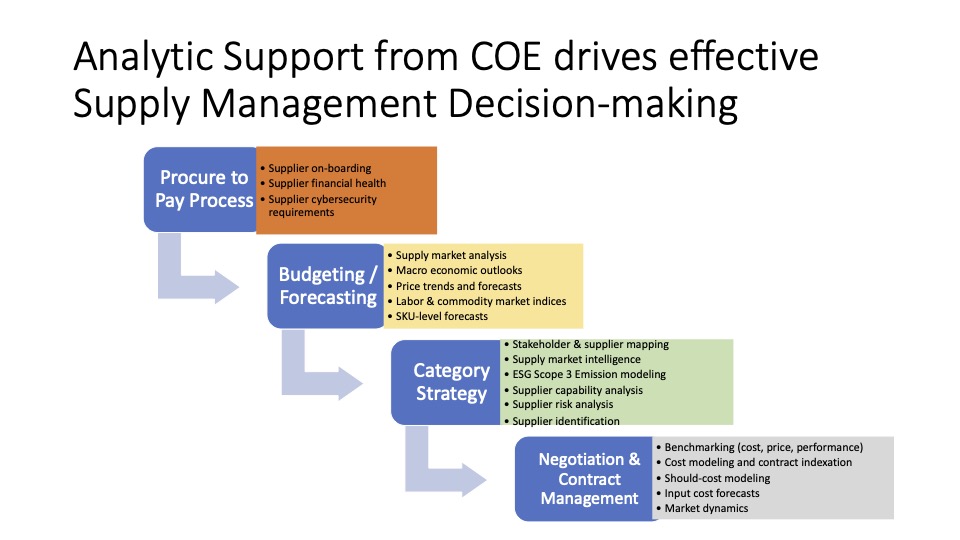Supply Chain Management During the Holidays
Gift giving and receiving is a big part of the holiday season. Supply chain and logistics processes must be efficient to handle the increased gift giving. Gifts must be available for purchase to be put under a Christmas tree for storage until delivery. Retailers must have the most popular gifts on the shelves at the right times to make a sale. Christmas trees must be cut, shipped, and sold in a very small time window in order to stand tall over the gifts. The supply chain and logistics of Christmas trees and gift giving makes one wonder how it all gets completed in such a short amount of time.
Christmas Tree Facts (1)
- 35 million Christmas trees are harvested each year in the United States. 95 percent of these trees are grown on Christmas tree farms
- North Carolina farms harvest over 6.5 million trees each year. These trees ship to all 50 states, the Caribbean, Mexico, Canada, Japan, and other points around the world (2).
- Over 100,000 people are employed on Christmas tree farms
- Over 330,000 Christmas trees are sold over the internet or in catalogs
- In 2002, 21 percent of US households had a real tree, 48 percent had an artificial tree, and 32 percent did not have a tree.
- In 2003, 21 percent of Christmas trees sold were from chain stores, 15 percent by non-profit groups, 13 percent from retail lots, and 35 percent from choose and cut farms.
- The value of all Christmas trees purchased on 2003 was $291 million. These facts indicate that the Christmas tree business is important during the holiday season. The trees must be harvested, baled, and shipped by truck, train, and plane to locations around the world. Helicopters are even used to harvest Christmas trees. The logistics required to get Christmas trees to the proper locations is a complex process. Once the trees are in the homes of Americans, the trees watch over the gifts that also travel through a complex logistics process to arrive under the tree at the right time.
Logistics of Gift Giving and Receiving
In the holiday season, retailers must be able to respond quickly to consumer demand. Holiday retails sales were $205.6 billion in 2003 and are expected to increase by 5.7 percent this year to $217.4 billion (3). The Mattel toy company is a good example of a company improving processes to be able to handle holiday demand. Mattel has improved on its logistics process with the goal of improving product availability during the holiday season. Mattel installed a transportation management system to optimize its shipping networks (3). Mattel also improved its forecasting methods from monthly to weekly buckets and installed optimizing software for warehousing and manufacturing operations. These changes have allowed Mattel to build toys that retail stores need and send the toys when the stores need it while at the same time increasing efficiency. Mattel invested in software and processes to “simplify its supply chain, cut costs, shorten cycle times, and bring more science to the art of meeting customer demand (3).” During the holiday season if customer demand is not met, sales will be lost.
Accurate forecasting of holiday demand is critical to be able to meet that demand. During the holiday season, consumer orders double at Green Mountain Coffee Roasters. In the past, when special orders of Gingerbread, Spicy Eggnog, Holiday Blend, or other coffees arrived, production would be scheduled by a knee jerk reaction without considering other sales, shipping channels, or manufacturing challenges. Now that production planning software has been installed, the company is better able to forecast and schedule manufacturing operations. The lives of production personnel have been improved and increased demand during the holiday season can be met (3).
Best Buy, the electronics retail provider, has also used software to ensure consumer demand is met. 60 percent of Best Buy’s annual revenue is earned during the last quarter of the year (3). To ensure products are on the correct shelves, Best Buy must coordinate between 750 stores, eight distribution centers, 14 delivery centers, two consolidation centers, and two return centers. Best Buy has installed transportation and supply chain management systems to improve communication internally and with suppliers. Best Buy is able to break down consumer buying patterns by region and can check inventory levels at stores every 30 minutes (3). This point-of-sale and trend data allows Best Buy to efficiently meet consumer demand during the busy holiday season.
Hectic Holidays
Holidays are hectic for the consumer and for the manufacturers and retailers that provide gifts for the consumers. As these examples have shown, supply chain and logistics processes must be in place in order to satisfy consumer demand. The logistics processes of Christmas tree providers, manufacturers, and retailers determine whether or not a Christmas tree will be standing in a house with the correct gifts under it. Whether most people think about it or not, supply chain management is a critical part of people enjoying the holiday season.
References:
1) Scor Mode, Supply Chain Council, 12/15/04.
2) Tree facts, North Carolina Fraser Fir web site, 12/15/04.
3) Becheldor, Beth. Steady Supply. Information Week. 11/24/04.
- Categories:


